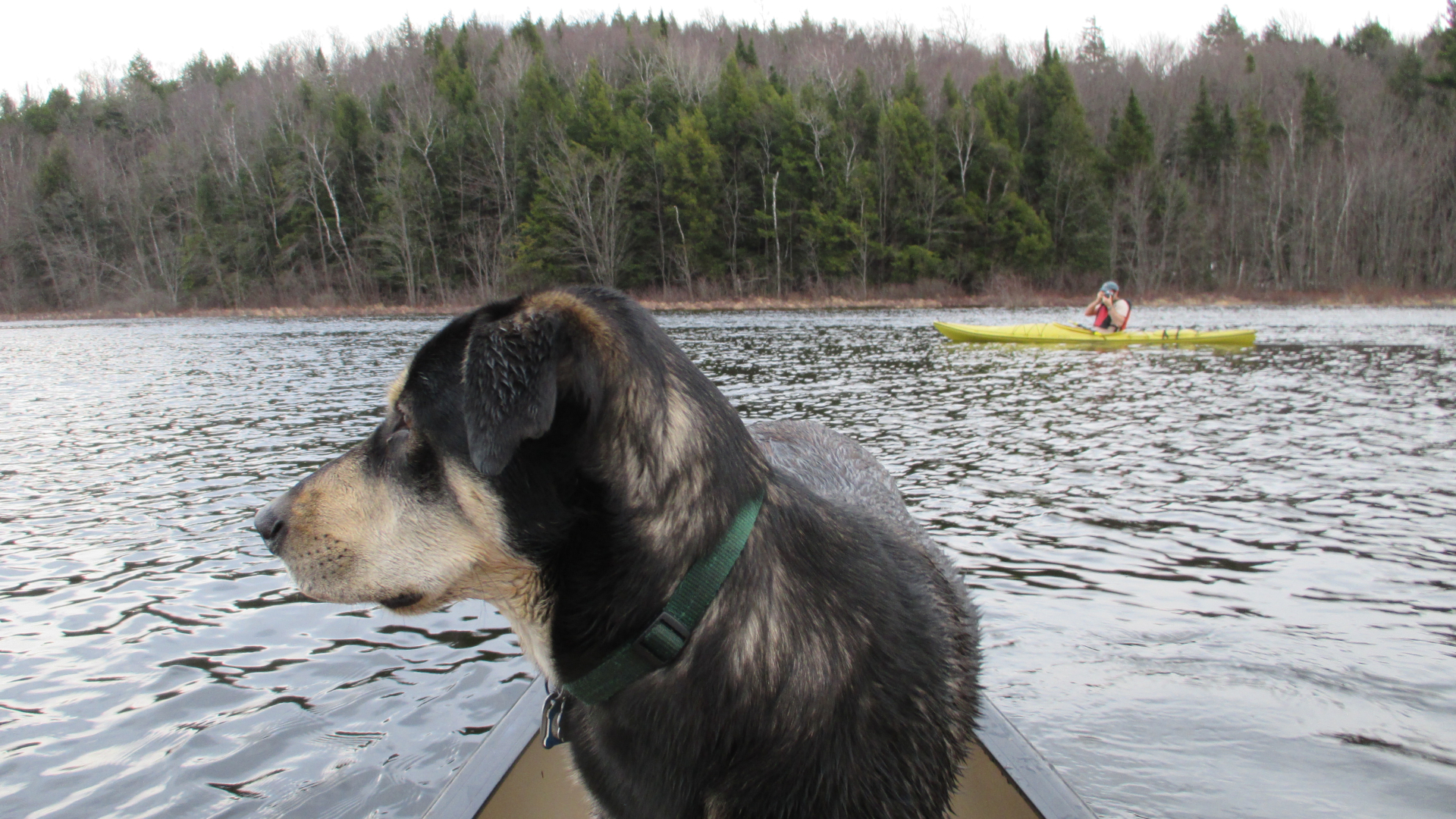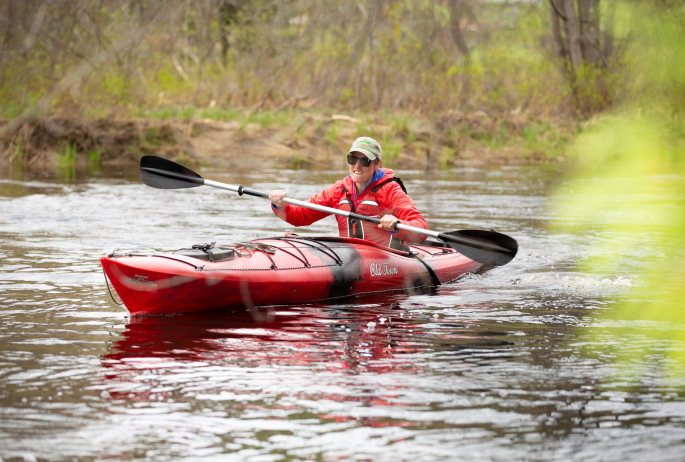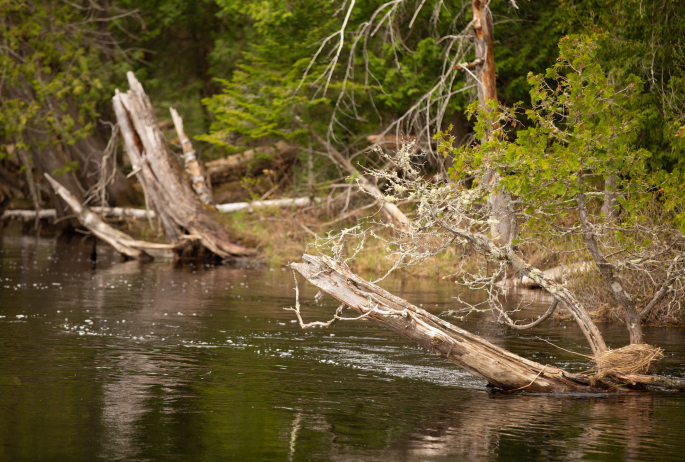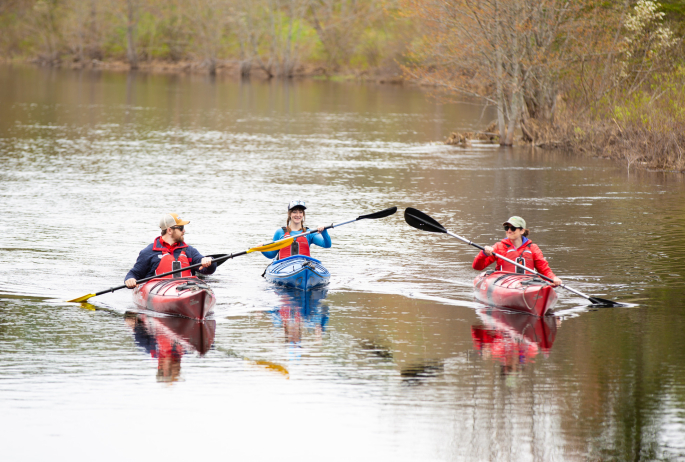Submitted by guest writer: Rivka Cilley
The Saranac River is always the first body of water in the Saranac Lake area to be clear of ice. A group of us recently paddled from the launch at St. Regis Canoe Outfitters to the top of Permanent Rapids on River Road.
It was a beautiful, warm sunny day with very little wind. The water levels were high with the spring melt, enabling us to take short cuts through areas that are normally grass covered. The banks of the river were mostly bare of snow with thin shelves of melting ice hanging down into the river. We felt privileged to enter a world that was impassable in the winter with ice and snow so thick that only wildlife was able to pass this way.
The trees were barren from a distance. Except for the green of the pine and cedar trees and the blue of the sky and water, everything was white with snow. We stopped to examine the clusters of reddish buds of the Silver Maple trees (Acer Saccharinum). The new leaves on the trees will be coming out soon with the warmer weather. By late spring the buds fruit into a wrinkled reddish-brown double Samara to form divergent wings 1-3 inches long. Samaras contains seeds which spread through wind and water to germinate. The Silver Maple tree is one of the fastest growing deciduous trees in North America.
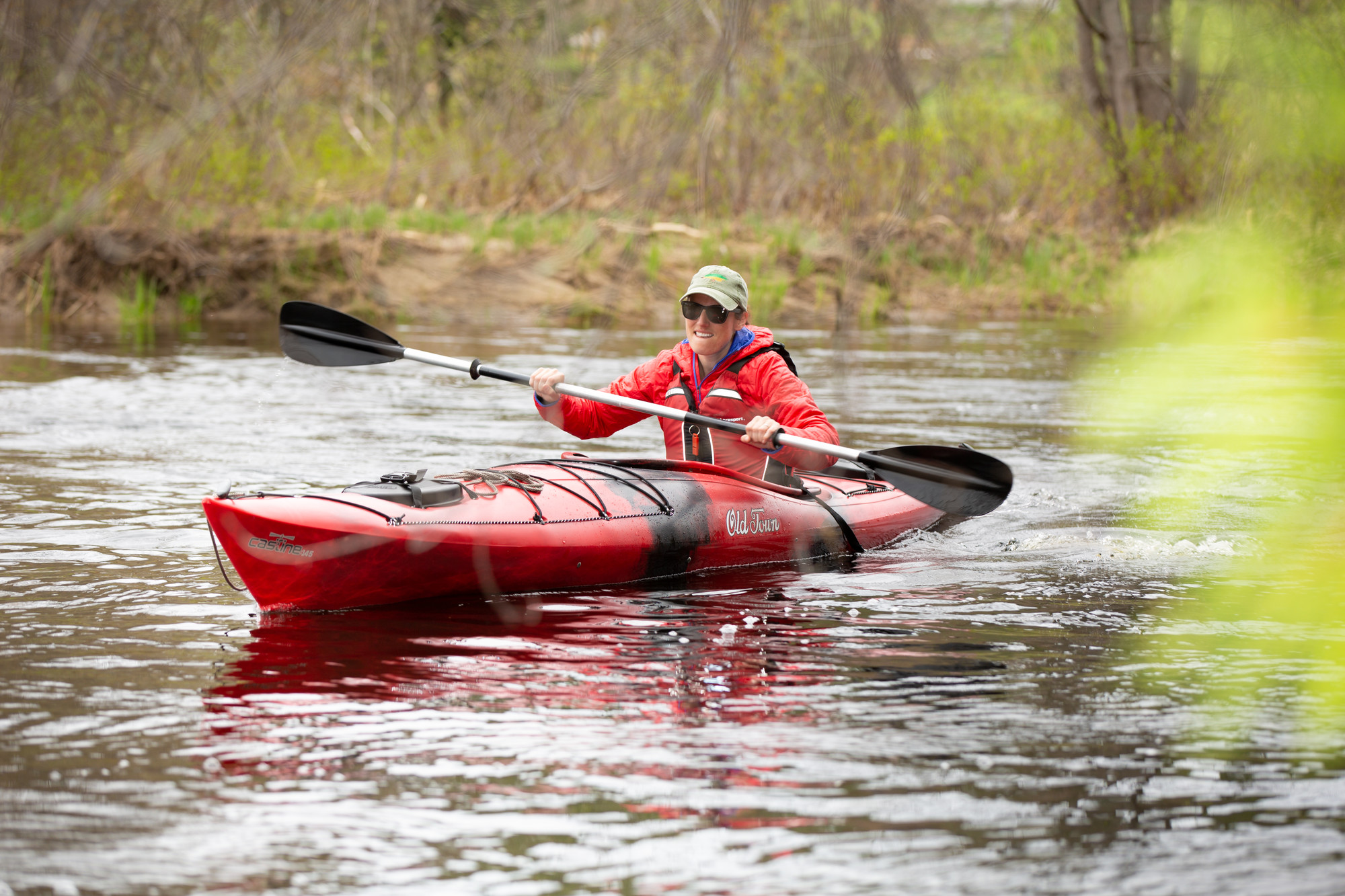
Birds were abundant. Flocks of Canadian Geese gathered along the shores. We saw dozens of Robins flying from branch to branch. We observed two immature Red Shouldered Hawks flying high in the sky, along with a few Turkey Vultures. Brightly colored breeding male Mergansers flew along paired with the reddish brown headed females. We also enjoyed watching the Kingfishers, Blue Jays, Sandpipers and other birds celebrating the warmth of a spring day. We felt awed by the sight of a Great Blue Heron lumbering across the water as we approached. A loud, hoarse croak followed as he landed on the opposite shore just downstream.
Several beavers delighted in diving in and out of the water right in front of us. They are usually very shy around boats, typically keeping their distance. During the winter beavers eat woody plants they store in their beaver houses. They, like many animals, are anxious to get out for fresh air and food when the ice goes out. Beavers eat the inner bark of living trees, preferring aspens but using many other deciduous species such as maples, birches, willows, beech, alder, and black cherry.
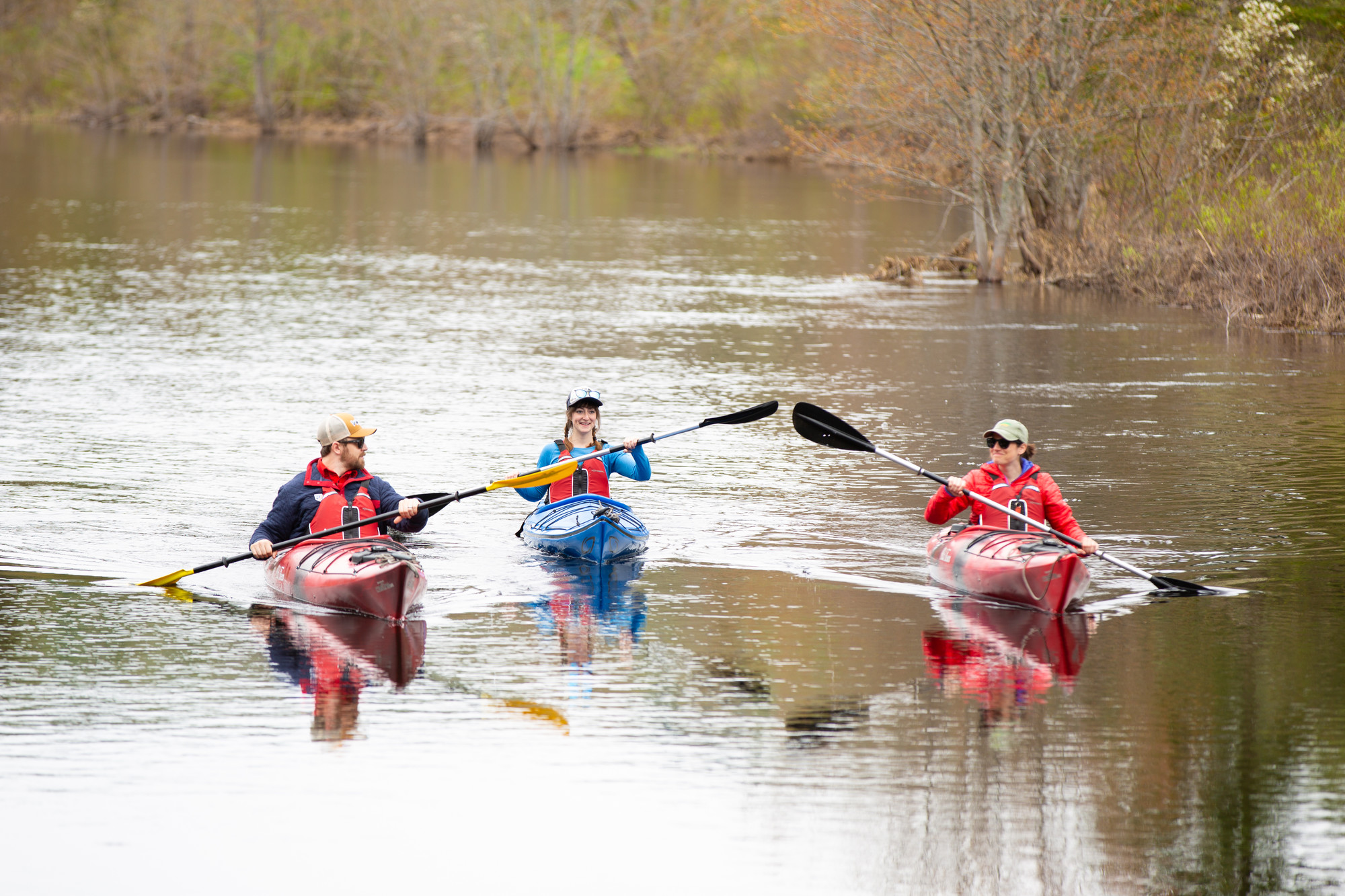
We stopped for lunch at the Northern Forest Canoe campsite at the junction of Moose Creek and the Saranac River. We walked up a slight hill to reach the campsite. As we ate our crackers, cheese, and nuts we enjoyed the beautiful view of the river and mountains. It is a great way to take in a broader perspective of the planned route.
As we continued our paddle we saw fish darting in and out from under the protective ice shelves. April 1 is the beginning of trout season and the fishermen have made their way out to fish on the rivers and creeks that are free of ice. The river takes a sharp turn to the right where Sumner Brook comes in, then curves around for a while.
The sunshine on our shoulders and the flow of the canoe as it glided along the river felt exuberating after a long winter. It was a celebrity moment to be out on the water. For us it marked the beginning of the 2018 canoe season.
Although it is May, this year there is still ice remaining on many of the lakes and ponds; it is very late in the season for this spell of cold weather that has held the ice in place. Mother Nature is moving along at her own pace this spring. Patience is necessary to really appreciate these transitional moments. These days are just as precious as the warm summer days. Now is a good time to sit back and observe as the warm weather does its job in melting the ice and snow.
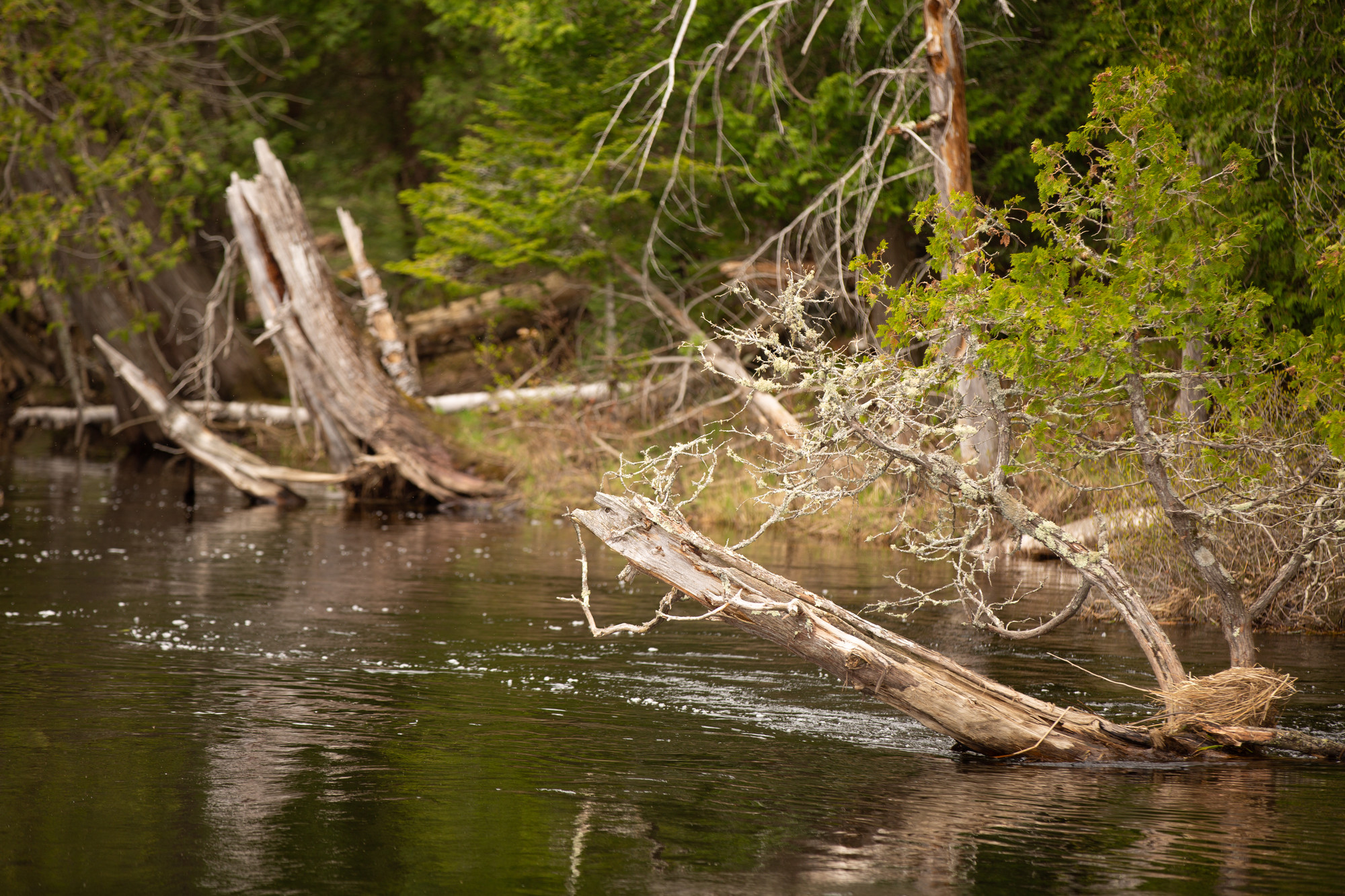
At one point the river takes a turn that allows you a spectacular view of Whiteface and the McKenzie range of mountains. The mostly snow-covered mountains rise in the distance with a powerful presence.
The river bends this way and that as we approach several small cabins situated right along the river. As the curving river begins to straighten we begin to watch for the take out before reaching Permanent Rapids. With the swift moving water, we move quickly over to the shore and take out safely at the portage after a very fulfilling paddle down the Saranac River.
As we depart we decide to start where we left off and continue the journey north. The Saranac River continues onward as it flows into Franklin Falls Pond, Union Falls Pond and then on into Lake Champlain. There are plenty of nice campsites along the way with lots of opportunities to observe nature at its best.
This route is part of the Northern Forest Canoe Trail (NFCT) which is a 740-mile water trail that begins in Old Forge, New York and ends in Fort Kent, Maine. The route is growing in popularity as it gets more media coverage. There has been several films and books written about the journey. Laurie Chandler was the first female to solo paddle (2016) the 740 miles. She will be giving an Author’s Talk with a slide show and book signing on June 29 at St. Regis Canoe Outfitters, part of the Celebrate Paddling month of June in Saranac Lake.
